Governing Council symposium draws U of T leaders and governors – past and present
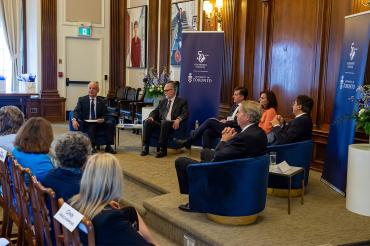
From left: Meric Gertler, Thomas H. Simpson, Richard B. Nunn, Judy Goldring, David Naylor and Robert Prichard (photo by Steve Frost)
Published: June 21, 2023
A recent symposium brought together 15 distinguished figures in the University of Toronto’s history to discuss the primacy of its academic mission – and the far-reaching impact of the decision to implement a unicameral governance model 50 years ago.
“In this current moment, when university governance is facing greater scrutiny, it is timely that we are marking this important milestone of 50 years of U of T’s unicameral governance model,” said Janet Ecker, chair of the Governing Council, at the event.
First adopted in 1973 under the leadership of former U of T President Claude Bissell, the unicameral model brought together the elements of two separate governing bodies: the academically focused Senate and the business-focused Board of Governors.
Importantly, the governing body’s membership was composed of both internal and external stakeholders.
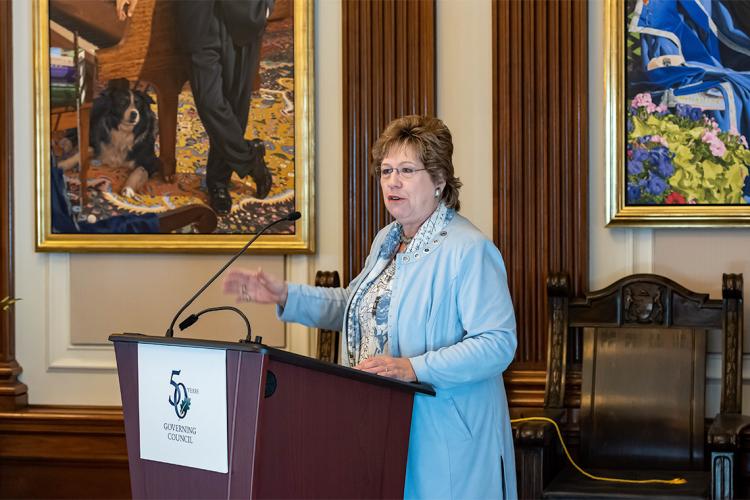
Robert Prichard, U of T’s president from 1990 to 2000, told the panel that the impact of Bissell’s move “to bring everyone around the table” a half century ago is still being felt.
“Governing Council is one of the great strengths of the university,” Prichard said. “It has become a source of legitimizing strength for taking initiatives, for change, for re-shaping the university … so we could take our place among the world’s truly great universities.”
U of T was the first – and, for many years, the only – Canadian university to use a unicameral model of governance. It’s an approach that ensures business decisions support the academic mission and vice versa – and has played a key role in enabling U of T to attract top scholars and researchers, along with the necessary funding to support their work.
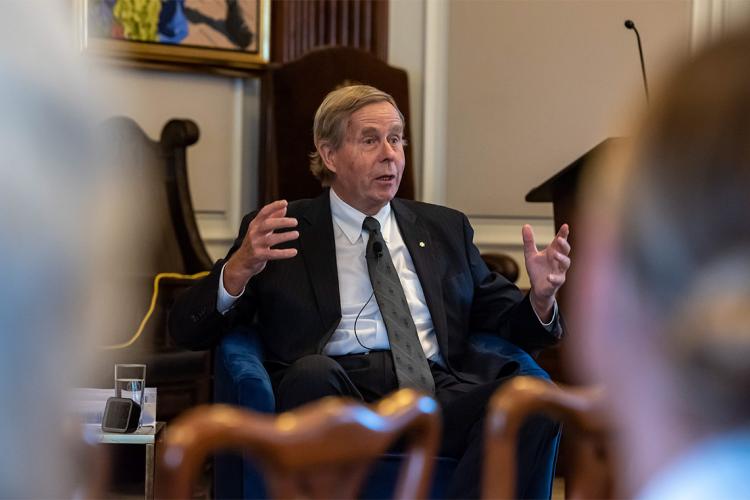
The council comprises 50 volunteers (known as governors) representing what are often referred to as the five estates – faculty, students, staff, alumni and community members appointed by the Ontario government.
In addition to Prichard, the May 12 symposium involved several current and former Governing Council members, including U of T President Meric Gertler, and drew about 100 people to the Governing Council Chamber.
“The whole event was about living history,” says Secretary of the Governing Council Sheree Drummond. “It’s rare when you can reflect on important matters of the university from the past with the people who were actually there when it happened.
“This symposium was one of those times.”
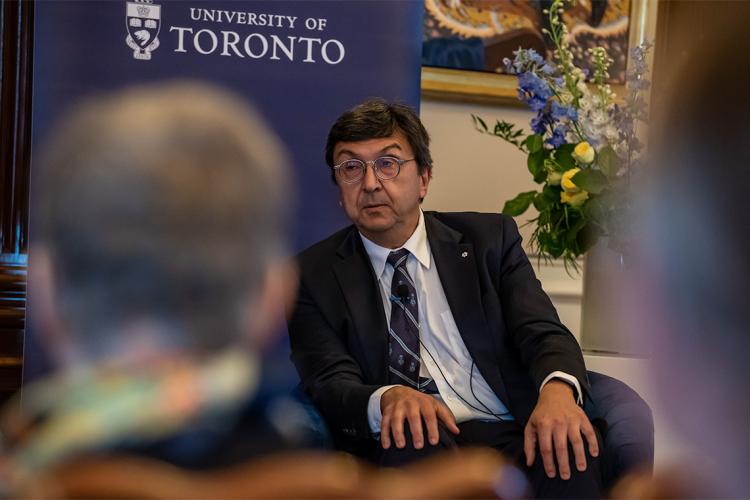
U of T President Emeritus David Naylor told the panel that the unicameral model has been an essential boon to the university’s ability to compete globally.
“If you look at the great public universities of the world, we compete effectively, in what are in many cases disadvantageous circumstances, and defy gravity because of our structure, which includes phenomenal governance that pulls everyone together and allows us to innovate boldly,” he said.
In addition to the 50-member Governing Council itself, governance at U of T also includes a variety of boards, councils and committees. Louis Charpentier, Secretary of the Governing Council from 1999 to 2015, said he believed this breadth of representation creates a connection between governance and the university community.
“There are so many governance bodies and so many people involved on each of our three campuses that I think it shows people actually care about what’s happening in governance,” Charpentier said. “They really want to be involved in the university’s decision-making process. Our Governing Council and all its bodies are not some distant groups making decisions for everyone.”
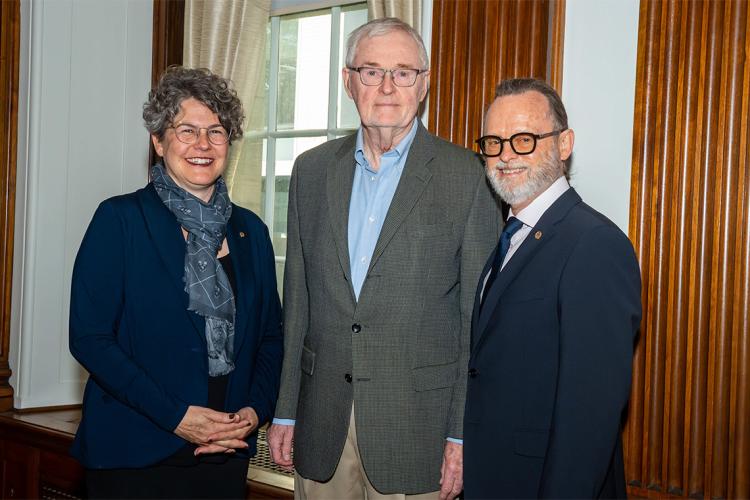
Other panellists noted that involvement in governance creates important opportunities for students.
“When I sat on Governing Council, at the table were Bob Rae, Bill Davis and David Peterson,” said Geeta Yadav, a student governor in the early 2000s (and a current alumni governor) who is now a dermatologist. “To sit at the table as a 19-year-old with three former premiers of Ontario…it was an enormous learning opportunity. It’s really powerful to be part of that dialogue and a beauty of the governance system we have set up.”
Yadav adds that the university benefits by having student voices on Governing Council. That includes international students, who became eligible for membership on the council after the U of T Act was amended by the province in 2014 to remove the citizenship requirement for members of Governing Council, apart from the president and the chancellor.
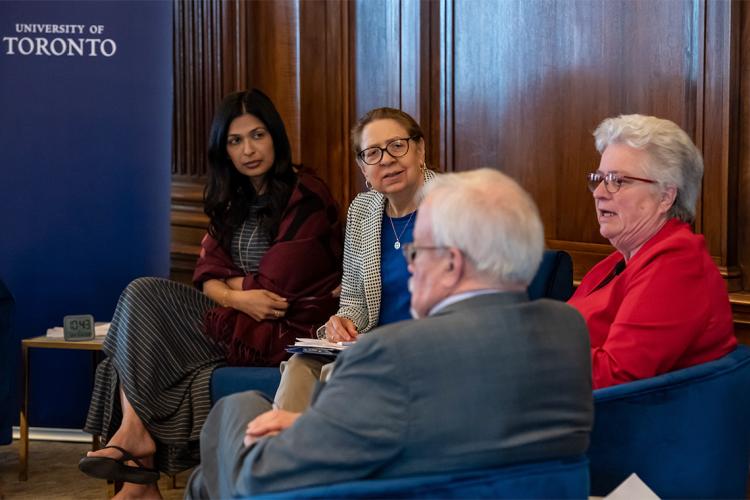
“I remember a number of international students who wanted to run for Governing Council, but they weren’t able to,” said panelist Susan Froom, a governor from 2014 to 2023 who represents part-time undergraduate students. “So, we had to lobby the provincial government to change the act. It was a time when the students were using the system to make change for the better.”
Froom added that bringing international students into the council dovetailed with President Gertler’s priority of strengthening international partnerships.
“It was the right moment in time to do that because it fit in with the vision of how we could make a more inclusive and stronger university by having those voices of international students at the table,” Froom said.
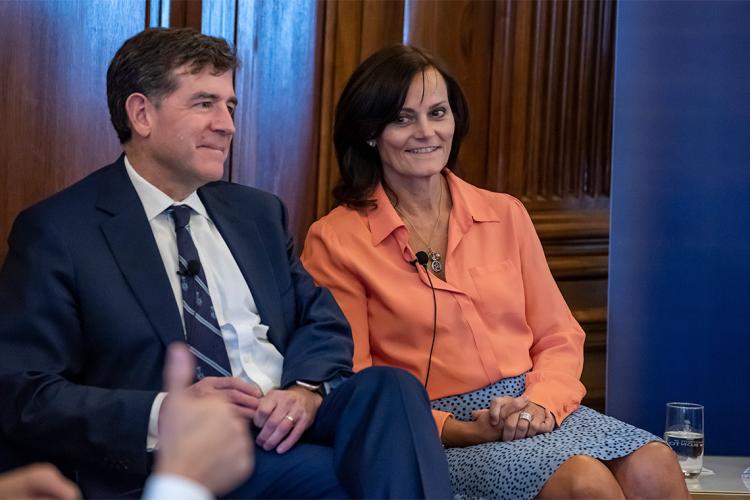
Former Governing Council Chair Judy Goldring similarly noted the change emphasized that “more than anything else, the unicameral system promotes representation” at the university.
Another panelist, U of T Mississauga Professor Emeritus Raymond Cummins, noted that Governing Council, through its Academic Board (of which Cummins was chair from 2002 to 2006), has also been essential for protecting the university’s key principles.
“Academic Board is one of the champions of academic freedom in the university,” said Cummins, noting that acclaimed author Salman Rushdie once spoke to the board about the subject.
Toward the end of the symposium, President Gertler called the adoption of the unicameral model a “significant milestone in the life of this institution” and praised the university’s “tendency to obsess over the system, reflexively revisiting it every few years and asking, ‘Is it working better?’”
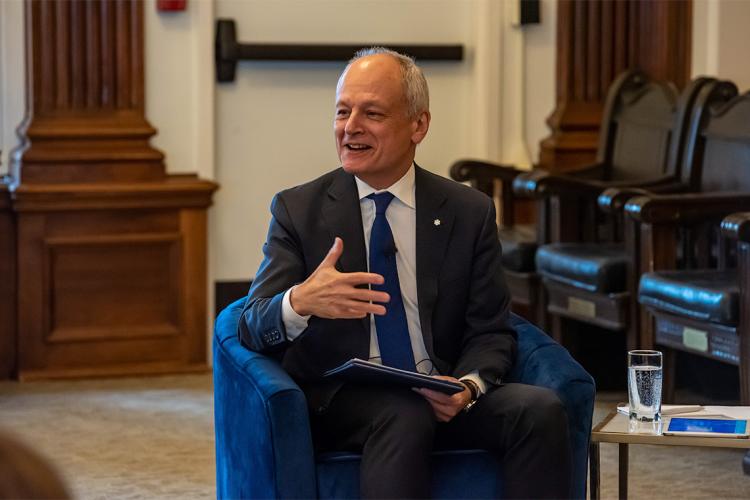
(The symposium’s panelists also included Jack Dimond, former secretary of the Governing Council; Professor Emeritus Ellen Hodnett, former teaching staff governor and former chair of the Academic Board; Associate Professor Andrea Sass-Kortsak, former teaching staff governor and former chair of the Academic Board; Richard B. Nunn, former government appointee and former chair of Governing Council; and Thomas H. Simpson, former governor (student, alumni, and government appointee) and former chair of Governing Council.)



